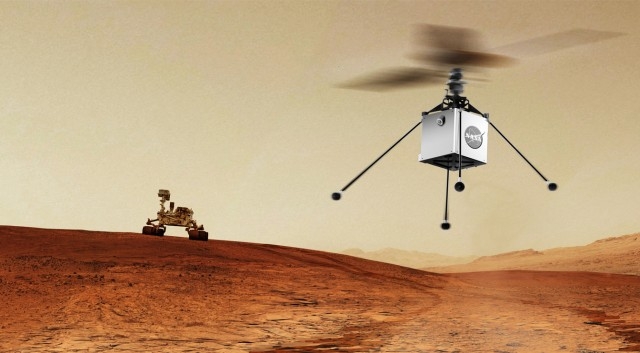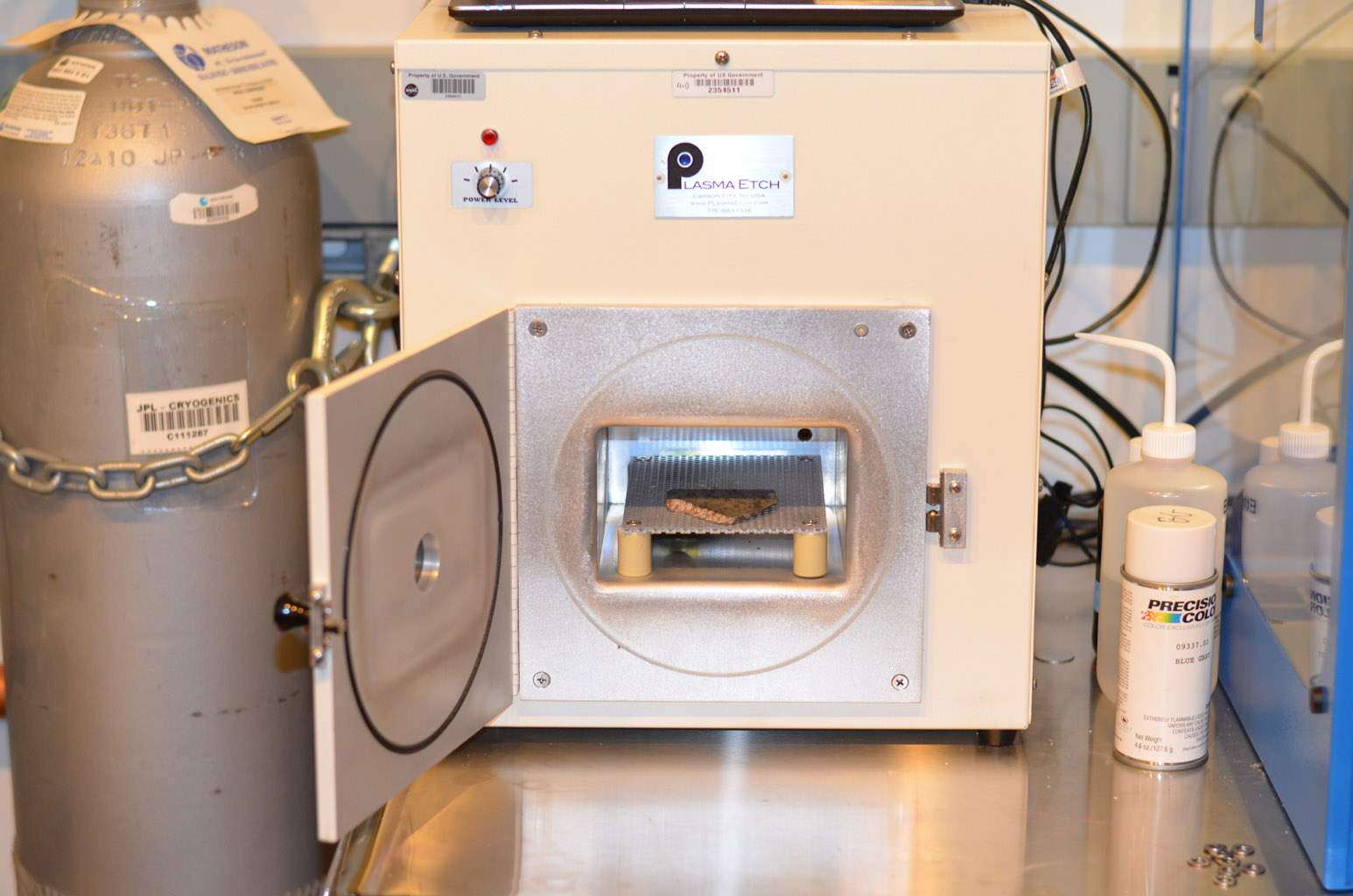Wahid Nawabi, chief executive of AeroVironment Inc., holds a scale model of one of the composite blades that will be used to propel NASA’s Jet Propulsion Laboratory Mars Helicopter through the thin Martian atmosphere. (Al Seib / Los Angeles Times)
A Southern California company that specializes in small drones for the military has an opportunity to contribute to aviation history: the first aerial flight on Mars.
AeroVironment Inc. is making the rotors, landing gear and material to hold solar panels for the Mars Helicopter project, which will be assembled at NASA’s Jet Propulsion Laboratory in La Cañada Flintridge. The device will deploy from NASA’s latest Mars rover in 2020, taking high-resolution images that can determine where the slower-wheeled vehicle should head next.
The drone helicopter will look somewhat similar to a hobbyist device you might see whiz by on the beach. But it will incorporate years of research into the challenges of flying in a thin atmosphere that has similar density to about 100,000 feet above Earth’s sea level.
“There’s been a lot of doubts about being able to even fly in the atmosphere of Mars,” said Wahid Nawabi, chief executive of the Monrovia-based company. “It’s been over 100 years since the Kitty Hawk moment. This is the next event.”



